Redoe Mold and Eifel Mold & Engineering represent two ends of the mold shop spectrum. Redoe is an international company with multiple mold-manufacturing facilities employing just over a hundred employees. Eifel is a 15-person, family-owned mold shop at a single location. These shops are located about 30 miles apart. Redoe’s main plant and headquarters are in Windsor, Ontario. Eifel’s plant is in Fraser, Michigan, to the northeast of its Canadian counterpart. Redoe specializes in large, complex molds for automotive lighting. Eifel is best known for molds for steering wheel components and interior instrument panels.
Both shops are fully committed to zero stock machining. This means having the dedication and discipline to routinely mill critical mold surfaces without leaving excess stock. The zero-stock condition of these surfaces precludes the opportunity to make up for tool wear, inaccuracies or uncontrolled process variables later. There is no second chance to correct or compensate with handwork at the bench.
However, producing virtually perfect mold surfaces directly on the milling machine bypasses several steps that add significantly to mold production time. Roughing, semi-finishing and finishing operations can be performed on the mold in the hardened state (for small molds, these operations usually can be done on one machine in a single setup). Little or no handwork is required after machining (mirror-like finishes for optical quality molding may require diamond paste polishing, but that’s about it). Time on the spotting press to verify core and cavity alignment is reduced to hours instead of days on smaller molds, a day or two instead of weeks on larger molds. What’s more, in many cases, molds produced with zero stock machining run longer and more efficiently in production at the customer’s injection mold shop. The extreme efficiency of the zero stock machining strategy enables both shops to offer globally competitive pricing and delivery. Redoe and Eifel prove that mold manufacturers can thrive in North America using techniques equally adaptable for a small or a large company.
Successful zero stock machining relies on a coordinated implementation of advances in four broad areas of manufacturing technology: super-rigid, super-accurate machine tools for high speed machining; workpiece fixturing that is flexible and highly repeatable; rigid holders for cutting tools with exceptionally accurate radius at the tip; and CAM software capable of producing tool paths for high-accuracy machining in the lights-out mode. Redoe and Eifel have in place the requisite hardware and software for zero stock machining. More importantly, both shops have a workforce that fully understands and embraces the no-room-for-error approach to mold machining that zero stock machining entails.
Common Ground
Although the differences between how Redoe and Eifel have implemented zero stock machining are interesting and important, what the two mold shops have in common is equally significant. Both have leaders who are strong proponents of this strategy, yet are realistic about the intense discipline it involves. Eifel’s president and CEO is Rick Hecker, whose father started the company as a pattern shop in the early 1970s. At Redoe, Eric Leene is plant foreman in charge of the 110-person mold production facility adjacent to the company’s administrative and engineering office. He has been with the company for more than 20 years. Each leader is responsible for moving his respective shop to zero stock machining, making sure its procedures are followed unstintingly and keeping up with new developments in technology.
Both shops are engaged primarily in molds for the automotive industry, which is not surprising given their location in the greater Detroit area. Trends in automotive styling heavily influence their work, which represents two areas especially sensitive to consumer tastes.
Redoe specializes in multi-shot, multi-color molds for headlamps, taillights and reflectors—components that substantially define the exterior appearance of a vehicle. “Designers are creating longer, deeper three-dimensional shapes with slighter draft angles and light-refracting texture patterns to produce dramatic visual effects,” Mr. Leene explains. This means that the corresponding molds feature deeper pockets, more complex contours and tighter clearances that present a machining challenge. The optical quality of the molded components magnifies the slightest defect and jeopardizes the desired aesthetic effect.
Eifel faces similar pressure, but from the consumer’s experience inside the car. “A steering wheel not only has to look right, but also has to feel right,” Mr. Hecker notes. The mold has to fulfill these critical demands. Another example of aesthetic concerns that impinge on the shop’s mold machining is a bezel for an instrument console. In this case, these concerns imposed equally stringent criteria for the mold Eifel recently completed to produce it. For example, see-through sections of the bezel had to be finished to a Class-A quality surface in the core and the cavity.
A Small Shop Big On Zero Stock Machining
Eifel and Redoe are alike in their total embrace of zero stock machining. However, each shop has implemented this concept in its own way. The greatest difference lies in the machining strategy that works best for the individual shop.
At Eifel, zero stock machining became “a way of life” around 2005, Mr. Hecker says. He became familiar with the concept a few years earlier at
Single Source Technologies (SST), a technology supplier in nearby Auburn Hills. (SST pioneered this strategy nearly 12 years ago and brought the process to light for many mold shops, including Eifel and Redoe).
Two five-axis VMCs from
Hermle (Franklin, Wisconsin) represent Eifel’s main resources for zero stock machining. A Model C40 was installed in 2008; a slightly smaller Model C30 was installed in 2011. The new machine has high-pressure, through-spindle coolant delivery, a feature that has proven valuable for milling and drilling using the latest generation of coated carbide cutters with coolant holes. Otherwise, the machines are similar. Both feature a rotary table in a trunnion supported at both ends for the fourth and fifth axes.
“We chose these machines for their extreme accuracy and rigidity,” Mr. Hecker says. The trunnion-style configuration is especially important at Eifel because the shop prefers to use 3+2 machining as much as possible. In this mode, the rotary axes are used to orient the workpiece so that cutting can be performed in three axes (X, Y and Z).
According to Mr. Hecker, 3+2 machining is ideal for molds with small, deep pockets and numerous undercuts. One of the main benefits is being able to reach workpiece features with a shorter, more rigid cutting tool assembly. A shorter, stiffer tool enhances the high speed machining (HSM) techniques at the heart of the zero stock machining concept. HSM involves taking light cuts at high feed rates with closely spaced stepovers. “A stiff, short tool will withstand higher feed rates without deflection so we can achieve the optimum chip load at the optimum depth of cut—even for cutters less than 1 mm in diameter,” Mr. Hecker notes. This also helps the shop get full productivity from the 18,000-rpm spindles on these machines.
Of course, the advantageous cutting tool strategy inherent to 3+2 machining is supported by other zero-stock machining prerequisites such as HSK tooling interfaces and balanced, shrink-fit holders such as long, tapered Slim-Line style holders from
Haimer USA (Villa Park, Illinois). For semi-finishing and finishing operations, Eifel typically uses ball-nosed end mills. For cutters with a diameter of 0.020 inch and smaller, the shop uses NS Tool products from SST. For larger cutters, the shop buys from
DiJet (Canton, Michigan). The top consideration is accuracy of the tip radius (±0.0002 inch is the norm for finishing operations.) Stepovers on finishing passes may be spaced as close as 0.0005 inch.
Eifel’s reliance on 3+2 machining has implications for CAM programming, too. For all zero-stock machining, the shop uses PowerMill from Delcam. Gary Schulz, the shop’s CNC manager, says this software has features of particular value for this machining strategy. One, he says, is the variety of options for approaching the workpiece surface with the cutting tool. “When reaching into tight spaces at the bottom of a deep pocket, your approach angle may be limited, so it is best to have several choices. It’s all about protecting the cutting edge of the tool as it contacts the workpiece,” Mr. Schulz explains.
The other software capability that shines is visualizing the stock model. PowerMill displays material left behind by operations performed with the previous cutter. This allows the programmer to choose “rest machining” options for the next smaller cutter. “This feature helps us be sure that this cutter will not encounter unexpected material,” Mr. Schulz says.
Finally, advanced collision detection provides another layer of protection during 3+2 operations. Mr. Schulz says that when planning for 3+2, it is easy to think only of the workpiece surface and the tool tip, while neglecting to consider nearby geometry and the shape of the entire tool assembly. Collision detection, he explains, catches oversights that might otherwise lead to broken tools or spindle nose crashes.
Large Molds, Big Benefits
For a number of reasons, zero stock machining was embraced more readily by shops manufacturing smaller molds. Shops producing larger, complex molds initially perceived zero stock machining as risky, difficult and costly. At Redoe, Mr. Leene would not disagree with this assessment. However, advances in machining technology have significantly eased the risk and difficulty of zero stock machining on large workpieces.
He can point to two MCC 2013 six-axis HMCs from
Makino (Mason, Ohio) on his shop floor as a case in point. These machines are the centerpiece of Redoe’s capability to finish large mold cores and cavities to a condition that requires little or no subsequent handwork. “These machines hold a tolerance of ± 0.001 to 0.002 inch all day long,” Mr. Leene attests. “It’s this extreme but reliable accuracy that makes it possible for us to speed mold production and drastically reduce spotting time,” he says.
At Redoe, “zero stock machining” usually means cutting critical mold surfaces to a 0.001-inch negative condition—that is, precisely “one thou” under the CAD-defined geometry. The reason for this goes back to the size of the molds Redoe produces. “We often need to cut with tools 15 or 18 inches long, so we can expect a slight deflection. Cutting to a negative condition allows for that deflection if it occurs. Plus, inserts and lifters are extremely likely to drop in place without fitting when cut undersize by 0.001 inch. It’s a sweet spot for us,” Mr. Leene explains.
A negative stock condition also speaks to the confidence he has in the accuracy of these machines. Although this approach seemingly increases the possibility of arriving at surfaces below an acceptable tolerance, Mr. Leene doesn’t worry. “With these machines, we’ve never had a situation where we needed to weld,” he says, referring to the practice of welding a layer of new material to build up a surface for re-machining as a corrective procedure.
Redoe’s first MCC2013 was installed in 2007. This machine marks the shop’s transition to horizontal machining of large mold components. The horizontal configuration proved to be advantageous because it offered better chip evacuation, a larger tool changer, more room for multiple setups, and fewer setups for each mold because it provides access to multiple sides of the work.
Going horizontal also encouraged the shop to explore more flexible workholding. Whereas Eifel finds magnetic workholding ideal for smaller work on VMCs, Redoe needed a modular, integrated fixturing system on a scale that would enable setting up much larger mold work rapidly, accurately and repeatedly. The answer was FCS System fixturing components, which use precise reference points to ensure accurate and repeatable positioning.
Distributed in North America by SST, the FCS System consists of a foundation plate with a common grid of locating holes that interface with modular mounting posts that attach to the mold base in an upright position. Clamping rings in the posts tighten in the locating holes to provide positive location. The posts also hold the mold base away from the table to improve clearance for five-axis machining. Support for palletization provides a path to greater automation in the future.
The second MCC2013 was installed at the beginning of 2011. The notable difference from the original machine of this class is the Makino VG (Variable Geometry) technology for sixth-axis capability. In this case, the sixth axis is a built-in rotary table, which has the same accuracy and rigidity, but adds greater flexibility. Improved access to the mold features that are of particular importance to Redoe is a major benefit, Mr. Leene states. For example, to approach deep corners, the machine can be programmed to index the B axis in addition to rotating the A and C axes. In effect, this tilts the walls away from the side of the tool, not unlike the maneuver one might use to tip a skinny jar so the skewer can reach the last olive at the bottom.
In addition, the design of one end of the support structure gives better accessibility so that a shorter tool length can used at locations with deep corners. “This is necessary for the required rigidity to maintain the accuracy we need for difficult, deep sections for negative stock machining,” Mr. Leene explains. Another advantage of six-axis VG is the eleven-inch reach off the large knuckle. On typical multi-axis machines, this distance is much shorter, causing interference and requiring longer tool assemblies.
“The main benefit here is higher throughput. We can keep this machine in the cut 24 hours a day, seven days a week,” Mr. Leene says.
Another notable aspect of Redoe’s strategy for zero-stock machining is the decision to reserve the high-end MCC2013s mainly for semi-finishing and finishing operations. “We could do roughing on these machines, but we opted to use a Toshiba boring mill with higher torque and a lower rpm spindle instead,” Mr. Leene says. One reason this strategy is workable is that the common FCS workholding system minimizes change-over time without reducing positioning accuracy when moving work from machine to machine.
Of course, Redoe adheres to the disciplines in the cutting tools and CAM programming capability required by zero stock machining. Cutting tools 3 mm and smaller in diameter are sourced from NS Tool, while larger cutters are supplied by
OSG Tap and Die (Glendale Heights, Illinois). For programming, the shop uses CAM-Tool from
CGS North America (Oldcastle, Ontario) for mold surfaces that require an optical-quality finish. The strength of this CAM product, Mr. Leene says, is the consistent chip load it maintains on high-speed finishing passes. These typically involve a 2-mm ball-nosed cutter making stepovers spaced 0.0015 or 0.002 inch apart. All other programming for the five-axis machines is handled on the shop floor with Delcam’s PowerMill.
Common Philosophy
To say that zero-stock machining is a “lifestyle” for a mold shop is no exaggeration. Behind this lifestyle is a set of philosophical principles that Mr. Hecker and Mr. Leene would agree are essential. These principles fall into three categories: people, process and technology.
• People
Shop personnel must have complete confidence in their collective ability to produce near-perfect mold surfaces. No one on the production team can harbor doubts, feel it is too risky or be uncertain about results.
Machine operators and programmers must trust one another based on communication and mutual respect for skill and experience.
Each team member has to take responsibility for maximizing output of production resources, including fullest use of unattended machining.
There has to be universal understanding that advanced techniques such as zero stock machining represent the best job security because they are essential to globally competitive pricing and delivery. Everyone in the shop is a stakeholder.
• Process
Producing mold surfaces that need little or no treatment after machining requires a systems approach. All process components must fit together seamlessly. There can be no weak links.
The accuracy and smoothness of machined mold surfaces depend on inherent accuracy at each step in the process—highly accurate machine performance, highly accurate toolpath commands, highly accurate tool tip radius.
High throughput is a priority. Zero stock machining accelerates mold manufacturing significantly without adding to the shopfloor headcount.
• Technology
Having the right equipment (machine tool, cutters, CAM software, workholding) is a requirement that cannot be compromised.
Investing in the full suite of technology components can and should be justified as a package based on total savings in the entire mold production process.
Technology is not static. The mold shop committed to zero stock machining has to be looking for the next level with the latest advances all the time and expect the investment to be ongoing.
Applying automation is essential. Leveraging labor hours with automated technology to maximize system output is a priority.
Molding The Future
By its nature, zero stock machining calls for intense concentration on the current moment. Maintaining the synergies arising from a convergence of advanced technology requires vigilance. Nevertheless, Mr. Leene and Mr. Hecker are remarkably focused on the future. Each has a clear idea of what his shop needs to do next. Their plans involve more automation to increase machine output without increasing labor input. Specifically, Redoe is formally preparing the ROI case for another six-axis MCC2013VG. Eifel is seeking a new location with ample room to arrange machines for better workflow and palletization.
What stands out is that both shops believe that mold manufacturing in North America does indeed have a future. Keith Kauzlerich, VP of SST, says he is encouraged to see these local companies regain global competitiveness. “I am seeing companies excited about the future of this industry again. Ten years ago, mold shops were clearly an endangered species. Those that have survived have evolved into stronger, fitter operations,” he says. “Zero stock machining is a technology-based process that enables companies to bring a production mindset to a custom tool. It is one of the key adaptations that has made this remarkable transformation possible,” he continues.
Most importantly, this approach creates a shop environment in which a capable workforce can sense its empowerment and vitality. “This is the kind of shop lifestyle that is attracting a new generation of young talent to mold manufacturers,” Mr. Hecker says. Ultimately, that is the renewal on which every future depends.
The Light That Does Not Lie


 Top: The core for a steering wheel armature die at left was cut to zero stock, as was the cavity. No benchwork or hand spotting were needed.
Top: The core for a steering wheel armature die at left was cut to zero stock, as was the cavity. No benchwork or hand spotting were needed.
Middle:This sample magnesium casting was produced in die components machined to zero stock.
Bottom: Results of the inspection scan of the core are color coded to indicate the comparison to the 3D “math model” in the CAD file. Green indicates a perfect match.
Eifel Mold & Engineering frequently has mold components subjected to a white-light digital scanning process. Using portable equipment, this process is conducted in the shop by
3D Scan IT, Inc., a scanning service provider in Royal Oak, Michigan. The scans are capable of capturing 3D surface dimensions as a high-density point cloud.
Scan data can be compared to a CAD model to detect any discrepancies in the mold surface. “Customers often request these scans so they can verify the accuracy of the mold tooling,” says Tim Hay, a lead CNC programmer at Eifel. The die cast tool for a magnesium steering wheel armature is a recent example.
The tool for this armature was particularly critical because the CAD model reflected the customer’s considerable engineering effort to develop a design that met stringent requirements for impact force absorption in the event of a crash. “Cutting to the model” was therefore not only a machining strategy, but also a way to preserve the functionality of the part, Mr. Hay explains.
The tooling was produced in H13 tool steel in a hardened condition (about 48 Rc). According to Mr. Hecker, minimal benchwork and hand spotting were needed, and this was mainly for final surface requirements and verification.
Mr. Hecker elaborates. “Scanning proves that the mold tooling is true to the math model and faithful to the customer’s design intent. In this case, the scan indicated that both the core and the cavity were exactly right.” This, he says, gives the customer confidence that the tooling will produce a good part. And if a problem shows up, errors in the tooling can be ruled out right away.
Of course, the scan also validates Eifel’s zero stock machining capability. “The scan shows us how well the machined surfaces match the CAD model and gives us an objective check on our processes. Successfully cutting to the model means the match will be within the appropriate tolerance band at every point,” Mr. Hecker says. If not, scanning brings the slightest deviation to light.
Learn about Autodesk.






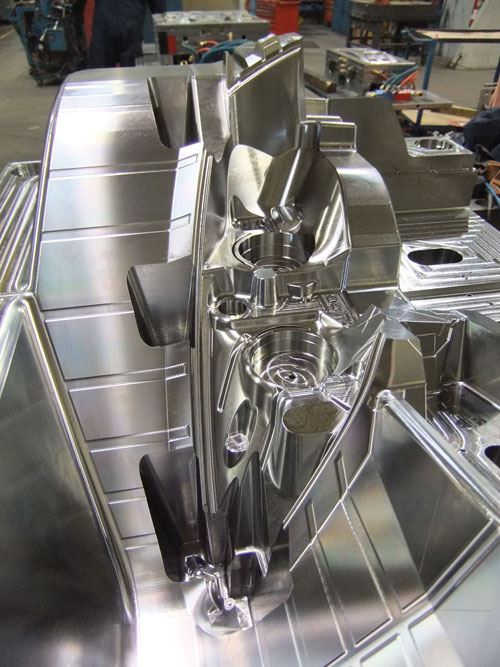
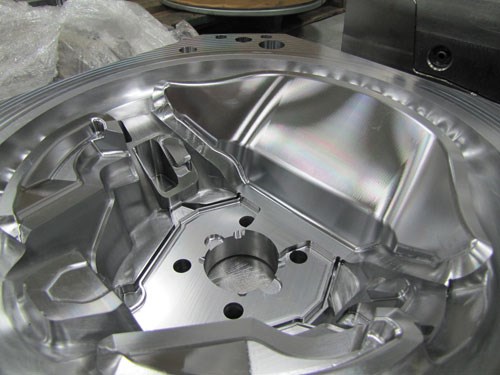
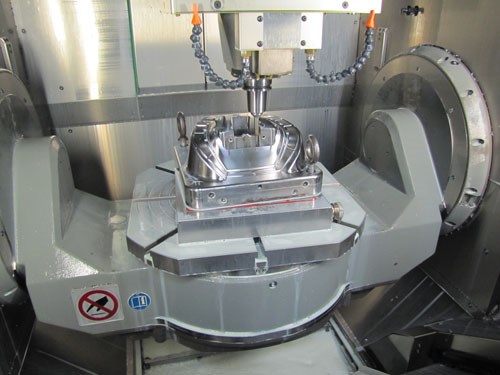
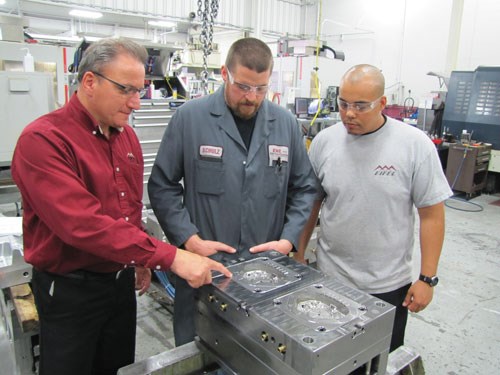
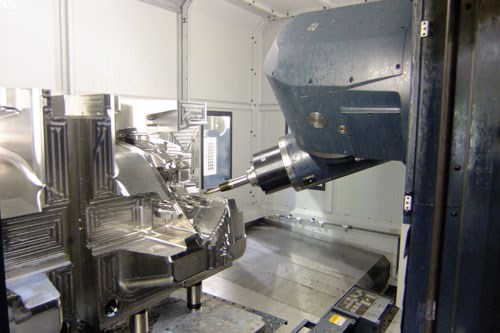
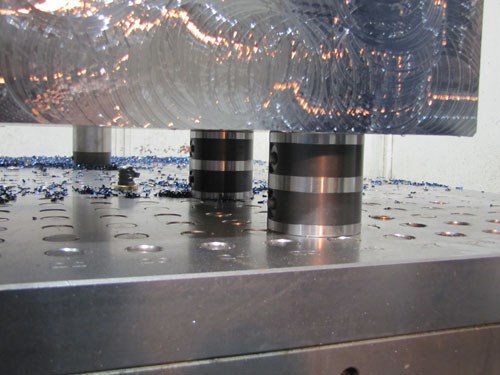















 Top: The core for a steering wheel armature die at left was cut to zero stock, as was the cavity. No benchwork or hand spotting were needed.
Top: The core for a steering wheel armature die at left was cut to zero stock, as was the cavity. No benchwork or hand spotting were needed. 











.jpg;maxWidth=300;quality=90)



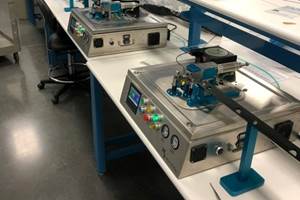

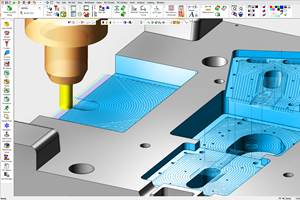




.jpg;maxWidth=970;quality=90)